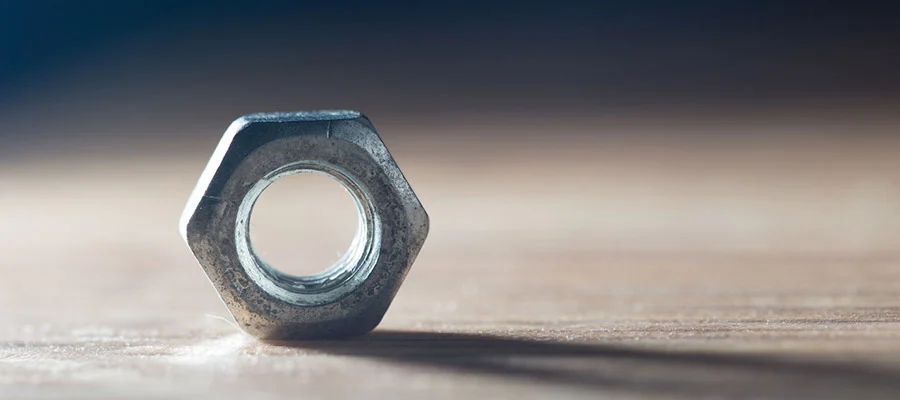Introduction to Coatings and the Flow Coating Process;
Coatings play a crucial role in protecting surfaces and enhancing their appearance. Whether it’s for machinery, buildings, or consumer products, the right coating can make all the difference. Among various application methods, flow coating has gained popularity due to its efficiency and effectiveness. But what exactly are inorganic and organic coatings? And how do they differ from one another in terms of performance and suitability?
In this guide, we’ll delve deep into the world of coatings—exploring their distinctions, benefits, and limitations. We’ll also shine a light on the flow coating process that helps deliver these coatings seamlessly onto surfaces. Join us as we unravel these complexities to help you choose the best option for your next project!
Differences between Inorganic and Organic Coatings;
Inorganic coatings are primarily mineral-based. They often feature compounds like silica and alumina, which provide excellent durability. These coatings resist heat and corrosion effectively.On the other hand, organic coatings mainly come from carbon-based compounds such as polymers or resins. They offer greater flexibility in application and can be formulated for various purposes.
One major difference of inorganic coatings and organic coatings is their resistance properties. Inorganic options excel in high-temperature environments, while organic types shine with aesthetics and color variety.Moreover, inorganic coatings usually have a longer lifespan but may require more rigorous application techniques. Organic alternatives tend to be easier to apply but might need more frequent touch-ups depending on environmental exposure.
Understanding these distinctions helps industries choose the right coating for specific needs and conditions. Each type has its unique strengths tailored to different applications.
Pros and Cons of Inorganic Coatings;
Inorganic coatings are known for their durability and chemical resistance. They excel in harsh environments, making them ideal for industrial applications. Their ability to withstand extreme temperatures is a significant advantage.Inorganic coatings have gained popularity in recent years due to their durability, resistance to corrosion and high-performance capabilities. However, as with any type of coating, there are both advantages and disadvantages to using inorganic coatings. In this section, we will discuss the pros and cons of inorganic coatings to help you understand if it is the right choice for your project.
Pros:
1. Durability: One of the biggest advantages of inorganic coatings is their durability. These coatings are made up of materials that are resistant to harsh environmental conditions such as extreme temperatures, UV radiation, and chemicals. This makes them ideal for use in industries like automotive, aerospace and construction where durability is crucial.
2. Corrosion resistance: Inorganic coatings also provide superior protection against corrosion compared to organic coatings. They form a strong barrier that prevents moisture and oxygen from reaching the underlying substrate, thus preventing rust or corrosion.
3. High-temperature resistance: Inorganic coatings can withstand high temperatures without losing their properties or degrading over time. This makes them suitable for use in applications where exposure to heat is common, such as exhaust systems or industrial ovens.
4. Chemical resistance: The chemical structure of inorganic coatings makes them highly resistant to a wide range of chemicals including acids, bases and solvents. This makes them ideal for use in environments where exposure to corrosive substances is frequent.
5. Excellent adhesion: In comparison to organic coatings, which may require special surface preparation techniques for proper adhesion, most inorganic coatings have excellent adhesion properties on various substrates such as metal, glass or ceramics without needing any additional primers.
Cons:
1.Elevated application temperature: One major drawback when it comes to utilizing an inorganic coating is that they usually require elevated application temperatures during the coating process due to their composition which may involve melting or curing at high temperatures using specialized equipment. This can increase the cost of the process and limit its use in certain applications.
2. Limited color options: Inorganic coatings have limited color choices compared to organic coatings, as they are mainly available in metallic or earthy tones. This may not be ideal for projects where a wide range of colors is required.
3. Brittle nature: Inorganic coatings tend to be more brittle than organic coatings, which means that they may crack or chip under mechanical stress or impact. For this reason, they may not be suitable for applications where flexibility is essential.
Understanding the pros and cons of inorganic coatings can help you make an informed decision when choosing the right type of coating for your project. While inorganic coatings offer many advantages such as durability and corrosion resistance, it is important to consider the specific needs and requirements of your project before making a decision.
Pros and Cons of Organic Coatings;
Organic coatings, often derived from natural sources or synthetic polymers, offer a range of benefits. One of the standout advantages is their versatility. They can be formulated for various applications and surfaces, making them popular in diverse industries.
Organic coatings have become increasingly popular in the coating industry due to their eco-friendly and sustainable nature. However, like any other type of coating, they come with their own set of pros and cons. In this section, we will discuss the advantages and disadvantages of using organic coatings.
Pros:
1. Environmentally friendly: One of the biggest advantages of organic coatings is that they are made from natural materials and do not contain harmful chemicals or solvents. This makes them a more environmentally friendly option compared to traditional inorganic coatings.
2. Non-toxic: Organic coatings are also non-toxic, making them safe for both humans and animals. Unlike inorganic coatings that may emit harmful fumes during application or curing process, organic coatings do not pose any health hazards.
3. Versatility: Organic coatings can be used on a wide range of surfaces including metal, wood, plastic, and even concrete. This versatility makes them a popular choice for various industries such as automotive, construction, and furniture manufacturing.
4. Cost-effective: Organic coatings are usually less expensive than inorganic options because they are made from renewable resources such as plant oils or resins.
5. Easy application: These types of coatings have good flow properties which make them easy to apply using different methods such as spraying, brushing or dipping. They also have a faster drying time compared to inorganic coatings which reduces production time.
Cons:
1. Durability issues: While organic coatings offer excellent protection against corrosion and wear for a certain period, they may not be as durable as some inorganic options like ceramic or epoxy-based coatings.
2. Limited color options: In comparison to synthetic pigments used in inorganic coatings, organic pigments offer fewer color options which may limit design choices for certain applications.
3.Risk of UV damage: When exposed to direct sunlight for extended periods, some organic coating pigments can fade or change color due to UV radiation exposure. This can affect the aesthetics of the surface and reduce its lifespan.
4. Thinner coating thickness: Organic coatings typically have a lower film thickness compared to inorganic ones, which may not provide sufficient protection for heavy-duty applications.
5. Longer curing time: Unlike inorganic coatings that cure quickly at room temperature, organic coatings may require longer curing times or higher temperatures to achieve optimal performance.
While organic coatings offer many benefits such as being eco-friendly and versatile, they also have some limitations that need to be considered before choosing them for a specific application. It is essential to carefully evaluate the pros and cons of both organic and inorganic coatings based on your specific needs and requirements before making a decision.
Understanding the Flow Coating Process;
The flow coating process is a revolutionary technique in the application of coatings. It involves allowing a liquid coating material to flow over a substrate, ensuring an even and consistent layer.
This method often uses gravity or controlled pressure to guide the fluid. As it spreads, it forms a protective barrier that adheres well to various surfaces.One key benefit of this approach is its efficiency. Flow coating minimizes waste since excess material can be collected and reused.
Additionally, it’s versatile enough for different types of coatings—both organic and inorganic—making it suitable for diverse applications across industries.The result? A smooth finish that enhances durability while maintaining aesthetic appeal. Understanding this process opens doors to innovative solutions in manufacturing and surface treatment projects.
Advantages of Flow Coating for Inorganic and Organic Coatings;
Flow coating offers a variety of advantages for both inorganic and organic coatings. Flow coating, also known as curtain coating or cascade coating, is a method of applying liquid coatings onto a substrate with the use of gravity. This technique has been widely used in industrial applications for both inorganic and organic coatings due to its many advantages.
- One of the main benefits of flow coating is its ability to achieve uniform and consistent coverage on complex surfaces. As the liquid flows down the substrate, it spreads evenly and smoothly, ensuring that every nook and cranny is coated. This results in a high-quality finish with minimal variations in thickness, which is crucial for certain applications such as corrosion protection or aesthetic purposes.
- Moreover, flow coating allows for a faster production process compared to other methods like spraying or dipping. With this technique, multiple substrates can be coated at once by adjusting the speed of the conveyor belt and controlling the flow rate of the coating liquid. This not only saves time but also reduces labor costs and increases overall efficiency.
- In addition to its efficiency, flow coating offers excellent control over the thickness of the final coat. By adjusting parameters such as viscosity and flow rate, manufacturers can achieve precise thickness specifications required for various industrial applications. This makes it an ideal method for producing thin layers that are necessary for sensitive components or delicate materials.
- Unlike some traditional coating methods that require heating or curing processes, flow coating does not require any additional energy sources. The constant flow of liquid creates turbulence which helps remove air bubbles from the surface during application, resulting in a smooth finish without any defects or imperfections. This makes it cost-effective as it eliminates extra steps and equipment needed for post-coating treatment.
- Furthermore, another significant advantage of using flow coating is its versatility in handling different types of coatings – whether they are organic or inorganic-based. It works well with various types of resins including epoxy, polyurethane, acrylics, etc., making it suitable for a wide range of applications from automotive to electronics industries.
Flow coating has become a preferred method for applying both inorganic and organic coatings due to its numerous advantages. It offers superior quality, efficiency, precision, and versatility – making it an ideal choice for manufacturers looking to improve their coating processes. With its ability to produce consistent and high-quality finishes while also reducing production time and costs, flow coating is undoubtedly a valuable technique in the world of coatings.
Applications of Flow Coating in Various Industries;
Flow coating has found its niche across a variety of industries, proving itself to be an efficient application method. In the automotive sector, it enhances durability and aesthetics by evenly distributing protective coatings on complex shapes.The aerospace industry benefits from flow coating’s ability to apply lightweight materials that resist corrosion. This ensures long-lasting performance in harsh environments.
Electronics manufacturers also embrace this technique for applying conformal coatings. These protect sensitive components from moisture and dust, improving product reliability.In furniture production, flow coating offers a smooth finish with uniform color distribution. It elevates design while ensuring protection against wear and tear.
Even in the marine sector, flow coating is essential for boats and ships. Its water-proofing capabilities help extend the lifespan of vessels exposed to challenging conditions regularly.
Conclusion:
When selecting the right type of coating for your project, several factors should be considered. The specific requirements of your application play a significant role in this decision.
For projects that require durability and chemical resistance, inorganic coatings may be the best choice. Their ability to withstand harsh environments makes them ideal for industrial applications. However, if flexibility and aesthetic appeal are paramount, organic coatings could offer more advantages.It’s also essential to think about environmental impacts and regulatory compliance. Organic coatings often have lower emissions and can be formulated to meet strict standards. On the other hand, inorganic options might provide longer-lasting protection without frequent reapplication.
Ultimately, understanding your project’s needs will guide you toward making an informed decision between inorganic and organic coatings. Whether you’re working in automotive manufacturing or looking to protect outdoor structures, there’s a suitable option available for every scenario. Choosing wisely ensures the longevity and success of your application.



